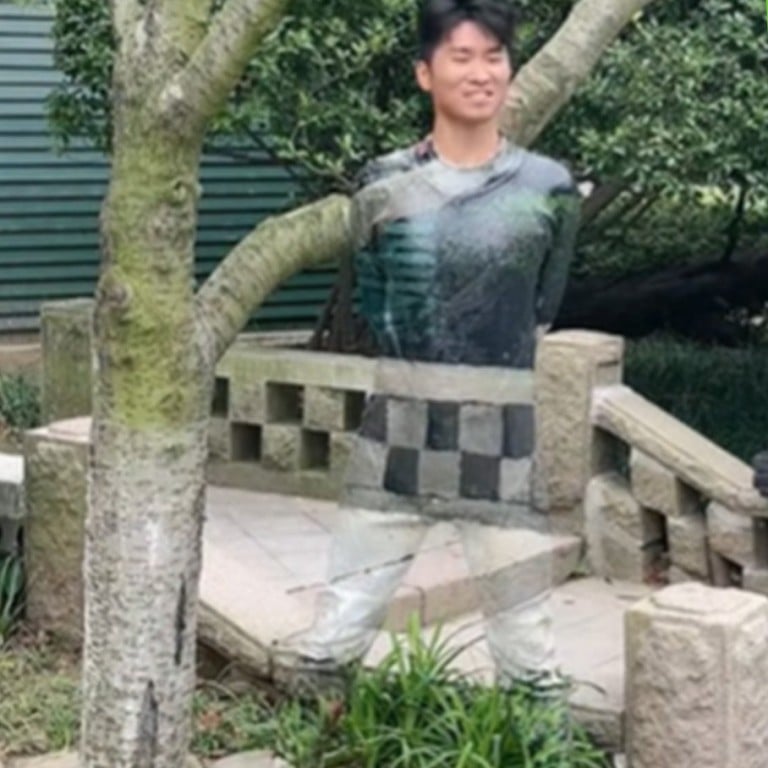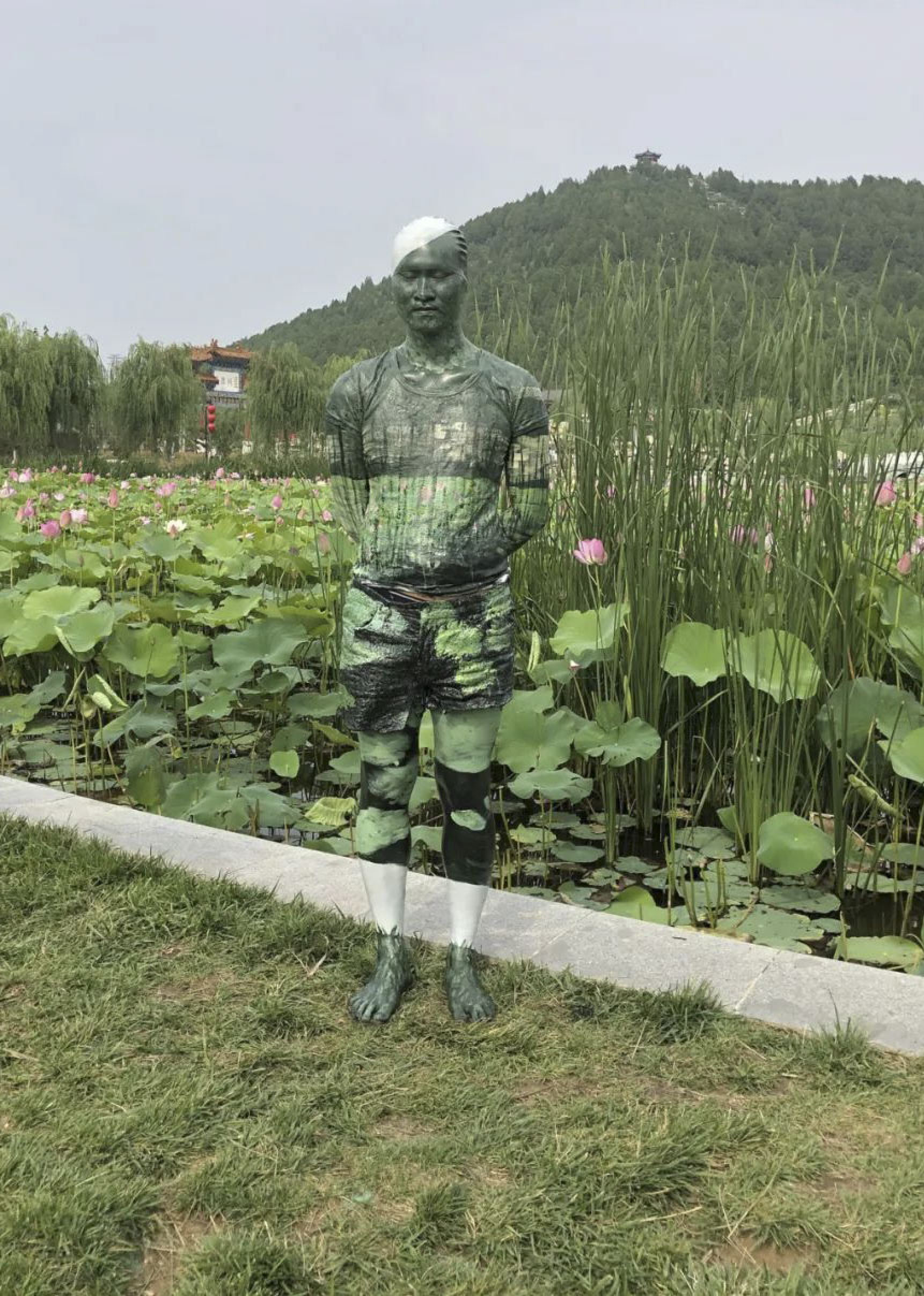
China ‘invisible man’ painter blends into surroundings with chameleon body colouring to promote love of nature
- Artist paints himself into natural backgrounds at scenic spots, famous buildings
- Visual creator is social media hit, attracts a million followers with unusual art form
An eco-friendly, so-called invisible man in China, who “disappears” in photos by using body painting in a bid to promote environmental protection has become an online hit.
Painter Wang Liang, 35, from Shandong province in eastern China, has been hailed as the “human chameleon” by his 1 million fans on Douyin.
Clad in all-white, Wang holds a brush and a palette while painting on himself according to the colours and light variations of backgrounds such as rivers, stones, trees, and flowers.
Once the painting is complete, he seamlessly integrates with the backdrop, effectively “camouflaging” himself in nature.

“My artwork aims to demonstrate the concept of humans blending into nature and living in harmony with it. I hope to advocate for nature conservation through my works,” said Wang.
He began studying painting at the age of 14 and later enrolled at one of China’s top art universities.
After graduating, with his wall painting business suffering during the Covid-19 pandemic, Wang sought to use his skills for something “more socially impactful”.
“Environmental damage nowadays is severe. Through body painting, I want to express the relationship between humans and nature, showcasing the beauty of the natural world,” he said.
Since 2020, Wang and his assistant have created thousands of works in cities like Beijing, Luoyang in central China, and Jinan in the east.
Their creations appear at famous scenic spots or near iconic buildings in urban areas.
“The bigger and more breathtaking the scene we choose, the more we enjoy painting it, as it enhances the invisibility effect,” said Wang.
It typically takes Wang two to three hours to complete a piece, using acrylic paints, oil brushes and other tools and he only paints on sunny days.

“The ideas are all in our minds, there’s no need for prior designs,” he said.
“The choice of background and colours is crucial. The more precise the colour mixing and light application, the better the integration with the background and sunlight.”
Wang’s unusual art form has sparked an intense online discussion.
Some question whether Wang achieves “invisibility” by using computer-generated special effects.
In response, Wang has showcased unedited videos of his entire painting process.
One supporter praised his work: “It’s a great concept. By hiding the human figure, the artwork shifts its focus away from humans towards nature.”
Liu Bolin, another invisible artist from Shandong province in eastern China, has achieved international acclaim with exhibitions in Paris, New York, Italy, and beyond.
He paints himself into the backgrounds of various man-made structures, illustrating the helplessness of human beings in the face of their environment.

